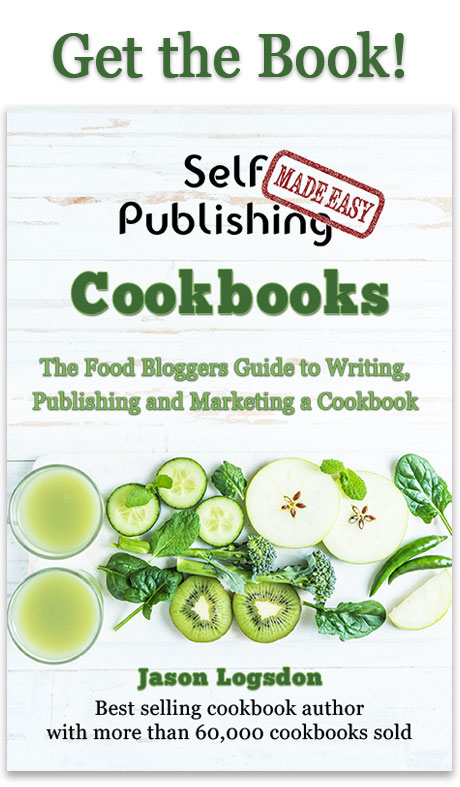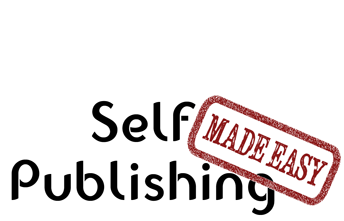Existing Users Sign In

Publishing Master Course Outline
- Self Publishing Master Course Introduction
- Before You Get Started
- Overview of the Publishing Process
- Determining Your Cookbook Goals
- Determine Type of Cookbook
- Consider a Sample Book
- Determine Book Subject
- What Makes a Good Cookbook Subject
- Brainstorming Cookbook Subjects
- Determine the Competition In a Cookbook Subject
- Finding Complementary and Competitive Products
- How to Generate a List of Keyword for Your Cookbook Subject
- Competitive Breakdown of an Amazon Sales Category
- Finally Choosing Your Cookbook Subject
- Research Cookbook Subject
- Choosing Your Avatars
- Researching the Cookbook Subject
- Researching Material for Your Cookbook
- Outlining and Notetaking Tools
- Write Cookbook and Recipes
- Keys to a Well Written Book
- Components to a Recipe
- Recipe Layouts
- Recipe Attribution
- Book Writing Tools
- How to Back Up Your Cookbook Files
- Photograph and Test Recipes
- How to Test Cookbook Recipes
- Food Photography Tips
- Proofread and Edit Cookbook
- Types of Cookbook Editing
- Tips for Self Editing Your Cookbook
- Finding Outside Editing Help
- Proofreading and Editing Resources
- Publishing Formats
- Types of Cookbook Publishing Formats
- Choosing a Self Publishing Printer
- Comparison of Print on Demand Cookbook Printers
- CreateSpace Cookbook Publishing Review
- IngramSpark Cookbook Publishing Review
- Ebook Publishers and Distributors
- Design Cookbook
- Cookbook Design and Formatting Guidelines
- Choosing A Great Cookbook Title
- How to Design a Cookbook Cover
- What Fonts to Use in Your Cookbook
- Cookbook Front Matter
- Cookbook Back Matter
- In-Book Marketing
- How to Design an eBook
- How to Create an ePub File
- Previewing and Testing eBooks
- Finding Outside Design Help
- Publish Cookbook
- How to Price Your Cookbook
- How to Write a Selling Book Description
- Determining Your Amazon Categories
- Choosing Publishing Keywords
- How to Publish on Amazon With CreateSpace
- How to Publish an eBook
- How to Publish On the Kindle
- How to Publish on the Nook
- How to Publish on iTunes
- How to Publish Your Book Through Smashwords
- How to Create and Sell a PDF on Your Blog
- Wholesaling Cookbook
- Methods of Cookbook Wholesaling
- Where to Wholesale Your Cookbook
- Developing a Wholesaling Line Sheet
- Promote Cookbook
- How to Launch Your Cookbook Successfully
- Getting Amazon Reviews
- Newsletter Promotions
- Free Content and Previews on Your Blog
- How to Get Blogs to Write About Your Cookbook
- General Articles
- All About ISBN Numbers
- How Do Cookbook Royalties Work?
- Financing Your Self Published Cookbook
- What is the Amazon Sales Rank?
- Cookbook Writing Resources
- Understanding Book Margins
- PDF Self Publishing FAQs
- How to Poll Your Blog Readers
- What is DRM
- Great Books to Learn About Food and Recipe Writing
- KDP Select - What Is It and Is It Worth it?
- Cookbook Design Programs
- Amazon Top Cookbook Reviewers
- Should You Publish Your ebook Directly or Use a Distributor
- Case Studies
- Sales Channel Revenue Breakdown with Modernist Cooking Made Easy
- Cookbook Writing and Marketing Templates
- Recipe Testing Worksheet Templates
- Review Requests Templates
- Cookbook Newsletter Promotion Templates
- Cookbook Manuscript Templates
Existing users please sign in to continue reading this article.
Welcome to Self Publishing Made Easy!
Publishing a Cookbook can be
Challenging
We will make the process clear and easy, allowing you to focus on creating a remarkable cookbook without any distractions.
Easily Navigate The Publishing Process
Benefit From a Community of Other Self Publishers
Maximize Your Distribution and Profit
We are the leading cookbook self publishing member site on the internet and are here to help you navigate the sometimes tricky path of self publishing. We provide step by step guidance to publishing your own cookbook as well as access to our active and helpful community of self publishers.
Or Get More Information about Self Publishing Made Easy
Disclosure : Some of the links in this post are affiliate links so if you click on the link and purchase the item, I will receive a commission.
Components to a Recipe
Click here to get great self publishing content via emailWriting a recipe for a cookbook is very similar to writing it for a blog but here is an overview of the different components that can go into a recipe. A recipe really only needs either ingredients or directions ( the preparation method) to be considered complete. At a minimum most recipes have a title, ingredients list, and preparation method.
If you need a more robust look at recipe writing we highly recommend The Recipe Writer's Handbook. It's a comprehensive guide to writing recipes including the different components, proper styles, and other important considerations.
Recipe Title
The title of the recipe is the name used to refer to the recipe throughout the text of the book, including the table of contents and the index. The name should usually be simple and declarative, quickly conveying what the recipe is for.
- Some of my latest recipe titles are:
- Spicy Pickled Watermelon Rind
- Spring Pea Soup with Carrot Pearls
- Bacon-Bourbon BBQ Jam
- Honey Goat Cheese Flatbreads with Port-Infused Figs
- Chocolate Mint Rum
- White Russian Pudding
- Mom's Sweet Potato Casserole Bites
Recipe Yield
The yield of the recipe lets the reader know how much food the recipe actually makes and is a valuable part of any recipe. This can be expressed several ways:
- As servings (how many it can feed)
- 4 Servings
- 8 Servings as a side
- Makes 4 Servings, 12 as an appetizer
- Feeds 12
- As an Amount
- 4 Cups Chutney
- 2 Gallons Iced Tea
Try to be consistent with the yield throughout the recipes in your book, both in wording and in relative size.
Recipe Headnote
Headnotes are the introductory text at the front of a recipes. Many cookbooks, especially more recently written ones, make extensive use of headnotes. Headnotes are a place to sell the reader on the recipe, provide more information they may need, and paint a picture of what the final dish will be.
Some example headnotes are:
Some flatbreads use pesto as a base sauce but this recipe separates out the pesto components and allows them to shine on their own. The basil is turned into a thick drizzle for the flatbread while the other ingredients remain whole and add bursts of flavor.
***
My mother-in-law is a huge fan of beets but I never ate them growing up so I'm still not completely sold. I've been trying to work beets into my cooking so I can develop a better appreciation for them. Turning them into crispy chips is one way I've found that I really enjoy beets, especially when served with flavorful dips.
***
I really enjoy how the sweetness of caramel complements pork. This recipe uses a rosemary caramel to act as a sauce for some sous vided pork. You can season the caramel with many different spices and it gives you a wide variety of flavors you can add to a dish.
Melted sugar is very hot and can cause burns. Be sure to use a large enough pot because the cream will boil and expand when it is added to the heated sugar. The caramel sauce can be made several hours in advance as long as it's reheated before using as a sauce.
Ingredient List
The ingredient list is one of the most important parts of a recipe. It lays out all the ingredients that a reader will need to recreate the recipe at home. It should contain the amount of the ingredient needed, as well as the name of the ingredient. Normally each ingredient is on a separate line and listed in the order it is used in the recipe.
Preparation Method
The preparation method is another very important part of your recipes. It explains to the reader, step by step, exactly what they need to do to prepare the dish at home. The amount of detail you go into will depend on your avatars and the complexity of your recipe. It's almost always better to err on the side of too much information than too little information. You will often have to rely on recipe testing to get feedback about whether your preparation methods are clear or not.
Nutritional Information
If your book is focused around healthy eating, providing the nutritional information can be invaluable for your readers. There are many different ways to provide the nutritional information ranging from a simple statement of "this has no sugar in it" to a more complex gram breakdown of fat, sugar, and carbohydrates.
Timing
It can be very helpful to your readers if you let them know how much time a recipe will take to make. This can take the form of the total time or it can be broken down into the preparation time, cooking time, and total time. It's also good to call out if a part of the recipe will take a really long period of time, such as marinating over night.
Recipe Variations
Providing variations on your recipe is a great way to help readers think of new ways to customize the recipe. This can take the form of suggestions for substitutions, alternate preparation methods, or different directions the recipe can be taken.
For a vegetarian take on this dish, substitute the ground meat with 2 large portobello mushrooms.
***
For an upscale modernist take you can turn the blue cheese sauce into a thick foam using a whipping siphon. Omit the olive oil and increase the heavy cream to 3/4 cup. Blend everything together then pour it into a whipping siphon. Seal and charge the siphon then dispense onto the steaks. The blue cheese foam can be made a day or two ahead of time and stored in the refrigerator.
***
This marinade also works well with fish, just replace the chipotle peppers with lemon peel and cumin.
Recipe Notes
Recipe notes are a place where you can share more information with the reader. This can include places to purchase hard-to-find ingredients, storage tips, suggestions for timing, re-heating ideas, alternative ingredients, drink pairings and anything else that doesn't fit into the other components of the recipe.








